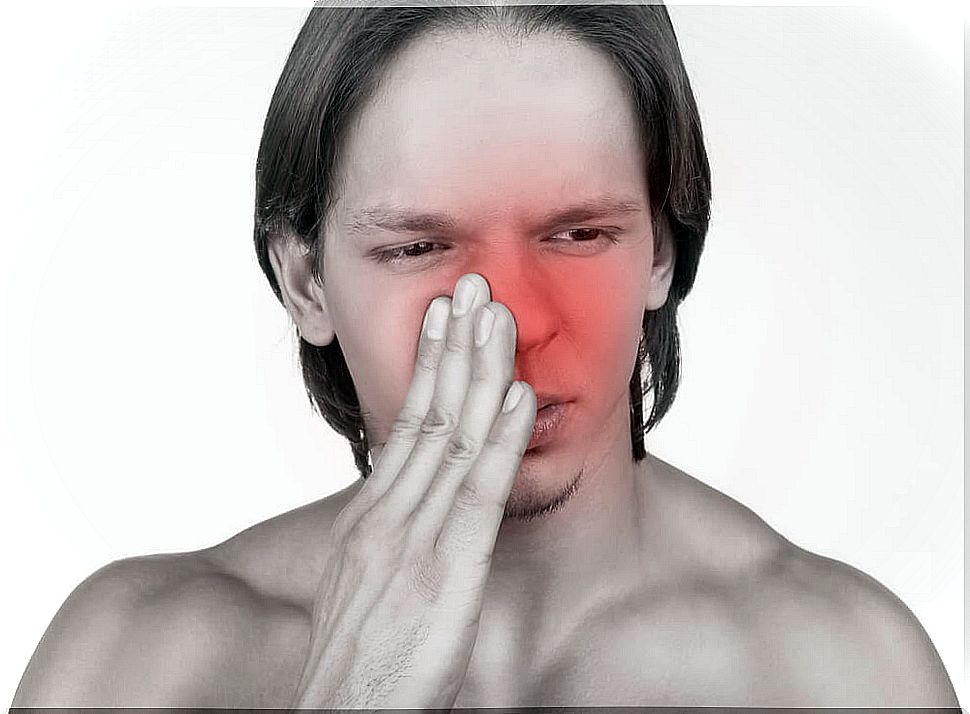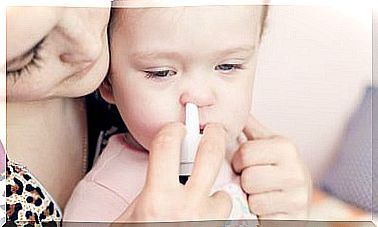Nasal Administration Of Medications
Nasal administration of drugs is a widely used technique, since it is easy to handle and offers many advantages over other routes of administration.
When inhaling the drug, it is better absorbed because it passes directly to the lungs and nasal mucosa, thus reducing the number of side effects. This allows smaller doses to be used because virtually none of the medication is wasted elsewhere.
For all these reasons, this route of administration is increasingly being chosen for many drugs. We will delve deeper into this below.
The nasal route: an alternative for the administration of medications

The nasal mucosa is rich in blood vessels, so if a drug is applied directly in the form of nasal drops, it will act locally. If, on the contrary, it is intended to achieve a general effect in the airway, we can use aerosols with microparticles of the drug.
Also, not all patients can use the oral route for drug administration. For example, the elderly who have swallowing problems, dysphagia caused by neurological disorders, babies who are in danger of choking, etc.
In the event that the patient cannot breathe properly (for example, if he has problems with respiratory failure or is simply a child who has not fully developed lungs) we can help him with medication nebulizers and with the help of a mask they will passively inhale it without any effort.
What types of medications are administered nasally?
There are many families of drugs that can be used. Next, we will comment on which are the most used drugs and in what type of diseases they intervene:
- Steroids Specifically, we are talking about the group of intranasal steroids. They are the definitive treatment for allergic rhinitis and allergic rhinosinusitis. Its effectiveness is very high, even in difficult cases where the pathology has already established itself and has become chronic.
- Antihistamines. They block the release of histamine, the key substance in the development of allergic processes. They are generally aerosols that are released on the nasal mucosa. They are used in the treatment of allergic rhinitis. Since histamine is a vasodilator, it is sometimes used to relieve other types of rhinitis. They can be combined with intrasalt steroids to achieve better results.
- Alpha blockers. They are the famous nasal decongestants. They are used in very short schedules, only a couple of days to avoid a rebound effect, which ends up weakening the blood vessels and producing the so-called drug rhinitis .
How are medications administered this way?

The procedure is very simple and does not require any prior preparation. It is preferred that the patient is seated to promote hyperextension of the neck backwards, but other than that there are no special recommendations.
First of all, the patient must have good hygiene of the nasal passages. This avoids dragging microorganisms into the mucosa. The bottle is then placed in the hole. Be careful not to touch the wall of the nostrils. It is better to aim towards the midline so that the medication does not go to waste.
The next step is to release the drug while breathing through your mouth. In this way, the sneeze reflex is avoided and the medicine remains in the correct area. Remember that the back of the nose is called the rhinopharynx. This area constitutes the upper portion of the airway.
The drug can fall down the throat if the mouth is not breathed properly while the neck is extended. Finally, the person must stay in that position for a couple of minutes. This helps the drug to be absorbed.
If after applying the nasal drops the patient coughs, it is recommended that they be incorporated. It is normal, especially the first few times. But if the cough worsens and other respiratory symptoms appear such as feeling short of breath (dyspnea), difficulty breathing, etc., it may be an allergic reaction.
In this case, you have to go to the emergency service so that the doctor can assess you. You can also prescribe corticosteroids that reduce the constriction of the pathway. Considering drug allergy testing is an option. However, in the vast majority of cases it is due to a hypersensitivity reaction.









